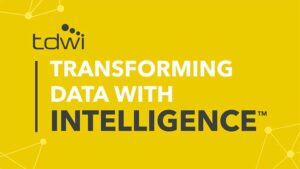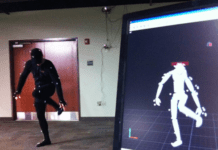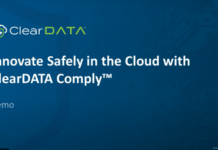
All over the world, people are transforming the ways they do business and leaning heavily on alternative technologies such as virtual reality, augmented reality, mixed reality, and artificial intelligence. In order for these technologies to work, it goes without saying that intense preparation must be done to ensure that the workforce and other employees know how to work alongside it. The same goes for the data that is going to be used to perform its functions. Before it can be used for training or working, the data has to be clean and consistent. There are several ways in which you can get the data into shape ex: Data Preparation & Machine Learning.
It is not an easy process to turn your data into insights. It definitely will not happen overnight. The most important thing to understand is the data. The data will be used in order for reports to be created that will be responsible for driving your action. It has come to a point where businesses must make use of this type of technology. If your competitors are using machine learning or AI but you are not, then you are putting the company at a disadvantage.
There is a lot of planning involved when it comes to preparing your data for ML and AI. It involves combining structured data and semi-structured data sets, that way the data can be cleaned and standardized. This is necessary for the data to be format-ready for machine learning or integration with BI & data visualization tools. If your data is prepared correctly, you will benefit from the process in the long and short term. Insights can be processed quickly & easily resulting in faster time to value. It increases the effectiveness & efficiency of the company.
Data Preparation& standardization are the tools needed for building powerful Machine Learning models, reporting, and ad hoc analysis. Data prep does not only help you with the seamless functioning of your AI models, but you can also use AI in the ETL processes to prepare data for a data warehouse. You can use an AI to extract valuable data from customer feedback without having to sit through it. Whichever way you choose to use the data or data ingestion, their transformation is the biggest concern for any company at the beginning of the data journey. This should be focused on from the start.
There are several common data transformations required before data is ready for machine use in machine-learning models:

- Remove unnecessary and repeated columns: Unnecessary and unused data will only take up space that could be used for more important data. By handpicking the data that you specifically need, you are improving the speed at which your model is training. You are decluttering your analysis. Think of it as a spring cleaning for your data: if you do not use it or want it, remove it before it clutters your whole system.
- Change data types: You must be aware of the data types that you use. The correct data types can reduce memory resources while the wrong data types can increase it. This will waste unnecessary resources. Changing the data type might also be a requirement for the model to function effectively. You may have to make numerical data an integer to successfully perform calculations. You may have to enable a model to recognize the type of models that are best suited to the data. Not all data is universal, you should be very careful about picking the wrong type.
- Handle missing data: During the data preparation journey, you might come across incomplete data. There is no formula for resolving the problem, your best solution will depend on the data set. Let’s say the missing value does not render its associated data useless, then you may have to consider replacing the missing value with a simple placeholder. Another solution might be to remove data without incurring loss to your statistical power but this will only work if your data set is large enough. The main thing is that you need to know the type of data you are working with and proceed with caution.
- Convert categorical data to numerical: It might not always be necessary, but many machine learning models require the categorical data to be converted to numerical. This means that data represented as “yes” or “no” must now be changed to “1” and “0”. You need to be cautious that you do not accidentally create order to unordered categories, like converting “Mr”, “Miss”, and “Mrs” to “1”, “2”, and “3”. This could be detrimental to your model, you may have to redo your conversions again.
- Convert timestamps: Timestamps come in different types of formats, you may encounter them when you are ensuring that you have clean data. In order to avoid any confusion, it is a good idea to use one type of timestamp in a particular format to use throughout your data set. It is also useful to ‘explode’ a timestamp by using its data warehouse date dimension that way it appears in its constituent parts. The year, month, day of the week, and hour of the day will then be displayed in separate fields. It will have more predictive power.
This is not a complete list of ways in which data can be structured or cleaned to ensure that it is in working order for machine learning. It is simply a guideline to get you started. There are other factors that you might want to consider such as how to handle outliers. To get the most out of your data analytics & visualization tools, prepare your data for analytics by grouping all the relevant data in a standardized format. This will ensure that the data stays in a high trustworthy shape . You can prepare this as a pipeline of operations in a cloud ETL which means that if you need to update more data, you can easily refresh it with the click of a button.
Resources:
Langton, David: Preparing Data for Machine Learning, TDWI.
27 May 2020























